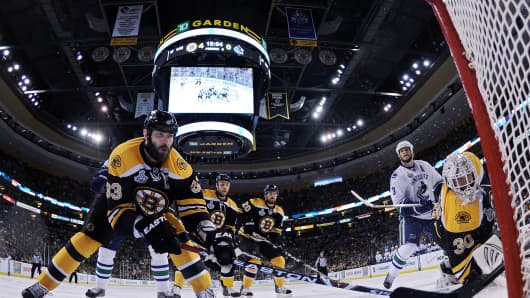Contracts:
No more 10-year deals. In the new collective bargaining agreement, a free agent cannot sign a deal longer than seven years.
That means defenseman Shea Webber, a player most Americans could not pick out of a police lineup, could not get anything like the 14 year, $110 million deal he signed last year. If a free-agent stays with his previous team, the deal could be pushed to eight years.
Also, front- and back-loading deals won't happen anymore, either. From year-to-year, salaries cannot go up or down by more than 35 percent. (Read More: No Full Talks in NHL Labor Fight)
Again, Weber is a good example. He was scheduled to receive $80 million over the first six years and just $30 million over the final eight.
Revenue Sharing:
In the previous collective bargaining agreement, the players received 57 percent of all hockey related revenue. That number goes to 50 percent, but there will be $300 million in so-called transition payments, which ease the transition.
And this needs to be put in perspective because — based on last year's revenue of $3.3 billion — that seven percent projects to be about $240 million a year.
The players don't recoup anywhere near that amount, but at least they get some money instead of an instant move to 50-50.
There are a slew of other elements to the deal, but this is all you need to survive at the water cooler.
And if you are exhausted by labor battles in sports, be calmed by at least knowing this: hockey won't have another labor issue for at least eight years. The new CBA is for 10 years, but either side can opt out after eight. (Read More: The NFL's 10 Best Cheerleading Squads 2013)
Based on our experience in all major professional sports, the odds are that one party will decide the deal isn't good enough to go on — but at least that's a few years away.
—By CNBC's Brian Shactman; Follow him on Twitter: @bshactman




